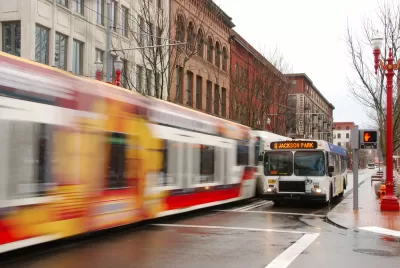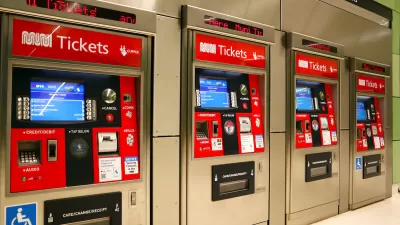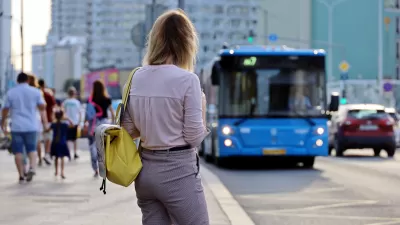More investments in high-quality transit service coupled with income-based discounts could offer a better way to boost ridership and help low-income riders.

In an article from The Conversation republished on Route Fifty, Nicholas Dagen Bloom, author of The Great American Transit Disaster, argues against eliminating transit fares at the expense of improving service.
“Despite flashing warning signs, political support for public transit remains weak, especially among conservatives. So it’s not clear that relying on government to make up for free fares is sustainable or a priority.” Meanwhile, “Free public transit that doesn’t bankrupt agencies would require a revolution in transit funding.” Dagen Bloom points out, “Studies also show that transit riders are likely to prefer better, low-cost service to free rides on the substandard options that exist in much of the U.S.”
For Dagen Bloom, income-based discounts such as ‘fair fare’ programs and fare integration offer better models. “As ridership grows under Fair Fares and fare integration, I expect that additional revenue will help build better service, attracting more riders. Increasing ridership while supporting agency budgets will help make the political case for deeper public investments in service and equipment. A virtuous circle could develop.”
FULL STORY: Low-Cost, High-Quality Public Transportation Will Serve the Public Better Than Free Rides

Study: Maui’s Plan to Convert Vacation Rentals to Long-Term Housing Could Cause Nearly $1 Billion Economic Loss
The plan would reduce visitor accommodation by 25,% resulting in 1,900 jobs lost.

North Texas Transit Leaders Tout Benefits of TOD for Growing Region
At a summit focused on transit-oriented development, policymakers discussed how North Texas’ expanded light rail system can serve as a tool for economic growth.

Why Should We Subsidize Public Transportation?
Many public transit agencies face financial stress due to rising costs, declining fare revenue, and declining subsidies. Transit advocates must provide a strong business case for increasing public transit funding.

How Community Science Connects People, Parks, and Biodiversity
Community science engages people of all backgrounds in documenting local biodiversity, strengthening connections to nature, and contributing to global efforts like the City Nature Challenge to build a more inclusive and resilient future.

Alabama: Trump Terminates Settlements for Black Communities Harmed By Raw Sewage
Trump deemed the landmark civil rights agreement “illegal DEI and environmental justice policy.”

Dear Tesla Driver: “It’s not You, It’s Him.”
Amidst a booming bumper sticker industry, one writer offers solace to those asking, “Does this car make me look fascist?”
Urban Design for Planners 1: Software Tools
This six-course series explores essential urban design concepts using open source software and equips planners with the tools they need to participate fully in the urban design process.
Planning for Universal Design
Learn the tools for implementing Universal Design in planning regulations.
City of Santa Clarita
Ascent Environmental
Institute for Housing and Urban Development Studies (IHS)
City of Grandview
Harvard GSD Executive Education
Toledo-Lucas County Plan Commissions
Salt Lake City
NYU Wagner Graduate School of Public Service





























